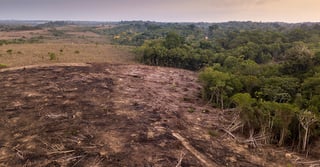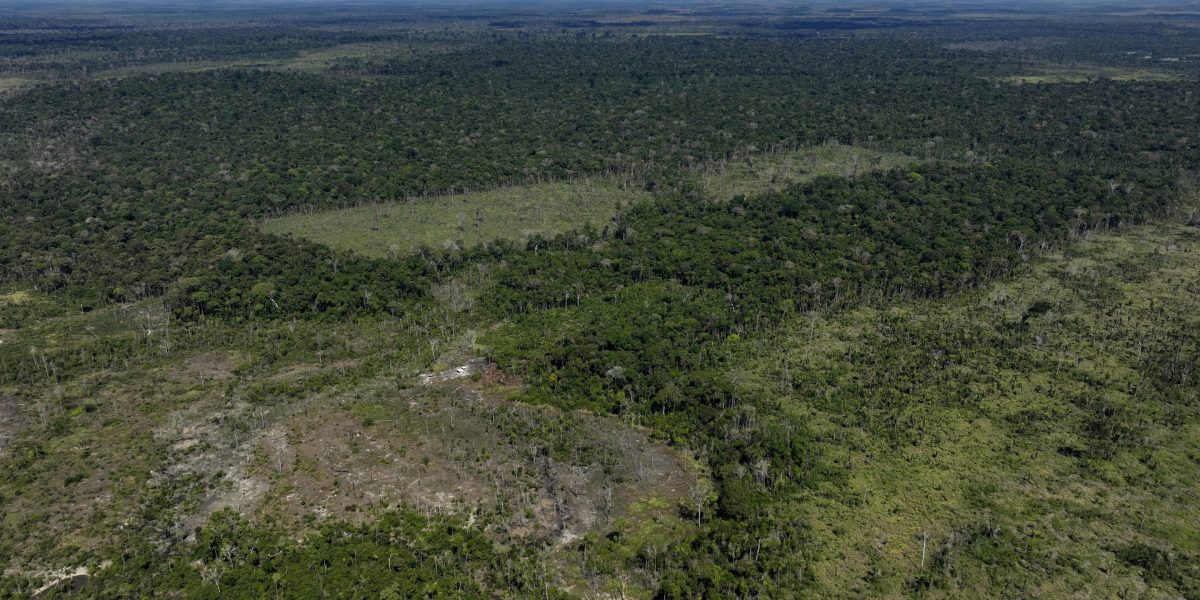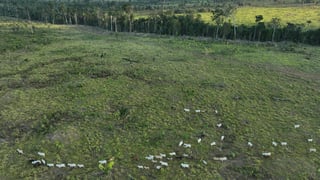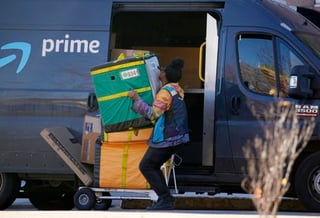
The Amazon rainforest is the largest rainforest in the world, covering an area of 3,000,000 km2 (1,158,306.48 square miles). It represents over half of the planet's rainforests and comprises the largest and most biodiverse tract of tropical rainforest in the world. This region includes territory belonging to nine nations. The majority of the forest is contained within Brazil, with 60%, followed by Peru with 13%, Colombia with 10%, and with minor amounts in Venezuela, Ecuador, Bolivia, Guyana, Suriname and French Guiana. The cattle sector of the Brazilian Amazon, incentivized by the international beef and leather trades, has been responsible for about 80% of all deforestation in the region, or about 14% of the world's total annual deforestation, making it the world's largest single driver of deforestation. The vast majority of agricultural activity resulting in deforestation was subsidized by government tax revenue. By 1995, 70% of formerly forested land in the Amazon, and 91% of land deforested since 1970 had been converted to cattle ranching. Much of the remaining deforestation within the Amazon has resulted from farmers clearing land (sometimes using the slash-and-burn method) for small-scale subsistence agriculture or mechanized cropland producing soy, palm, and other crops. More than one-third of the Amazon Forest belongs to more than 3,344 formally acknowledged indigenous territories. Until 2015, only 8% of Amazonian deforestation occurred in forests inhabited by indigenous peoples, while 88% of occurred in the less than 50% of the Amazon area that is neither indigenous territory nor protected area. Historically, the livelihoods of indigenous Amazonian peoples have depended on the forest for food, shelter, water, fiber, fuel and medicines. The forest is also interconnected with their identity and cosmology. For this reason, the deforestation rates are lower in indigenous territories despite strong pressures. According to 2018 satellite data compiled by a deforestation monitoring program called Prods, deforestation has hit its highest rate in a decade. About 7,900 km2 (3,050 sq miles) of the rainforest was destroyed between August 2017 and July 2018. Most of the deforestation occurred in the states of Mato Grosso and Pará. BBC News reported the environment minister, Edson Duarte, as saying illegal logging was to blame, but critics suggest expanding agriculture is also encroaching on the rainforest. It is suggested that at some point the forest will reach a tipping point, where it will no longer be able to produce enough rainfall to sustain itself. According to a November 2021 report by Brazil's INPE, based on satellite data, deforestation has increased by 22% over 2020 and is at its highest level since 2006. In the pre-Columbian era, parts of the rainforest were widely populated regions with open agriculture. After European colonization occurred in the 16th century due to the hunt for gold and later the rubber boom, the Amazon rainforest was depopulated due to European diseases and slavery, so the forest grew larger. Prior to the 1970s, access to the forest's largely roadless interior was difficult, and aside from partial clearing along rivers, the forest remained intact. Deforestation accelerated greatly following the opening of highways deep into the forest, such as the Trans-Amazonian highway in 1972. In parts of the Amazon, poor soil made plantation-based agriculture unprofitable. The key turning point in deforestation of the Brazilian Amazon was when colonists began to establish farms within the forest during the 1960s. Their farming system was based on crop cultivation and the slash-and-burn method. However, the colonists were unable to successfully manage their fields and the crops due to the loss of soil fertility and weed invasion due to this method. In indigenous areas of the Peruvian Amazon such as the Urarina's Chambira River Basin, the soils are productive for only relatively short periods of time, therefore causing indigenous horticulturalists like the Urarina to move to new areas and clear more and more land. Amazonian colonization was ruled by cattle raising because ranching required little labor, generated decent profits, and land under state ownership to private companies, without term limits on property rights. While the law was promoted as a "reforestation" measure, critics claimed the privatization measure would in fact encourage further deforestation of the Amazon, while surrendering the nation's rights over natural resources to foreign investors and leaving uncertain the fate of Peru's indigenous people, who do not typically hold formal title to the forestlands on which they subsist. Law 840 met widespread resistance and was eventually repealed by Peru's legislature for being unconstitutional. In 2015, illegal deforestation in the Amazon was on the rise again for the first time in decades; this was largely a result of consumer demand for products like palm oil. As consumer pressure increases, Brazilian farmers clear their land to make more space for crops like palm oil, and soy. Also, studies done by Greenpeace showed that 300 billion tons of carbon, 40 times the annual greenhouse gas emissions from fossil fuels, are stored in trees. In addition to the carbon release associated with deforestation, NASA has estimated that if deforestation levels proceed, the remaining world's forests will disappear in about 100 years. The Brazilian government adopted a program called RED (United Nations Reducing emissions from deforestation and forest degradation Program) in order to help prevent deforestation. The RED program has helped more than 44 countries across Africa with the development of education programs and has donated more than $117 million to the program. As of January 2019, the president of Brazil – Jair Bolsonaro – has made an executive order that allows the agriculture ministry to oversee some of the land in the Amazon. Cattle ranchers and mining companies favor the president's decision. Brazilian economic policy is influencing the government to condone development on tribal territory in order to accumulate exports and increase economic growth. That has been criticized because taking away tribal land will endanger the indigenous people who live there now. The deforestation of the Amazon leads acceleration of climate change, increasing the relative contribution of Brazil to climate change. From Wikipedia

Lawmakers and environmental groups warn that the meatpacking giant's increased capital could enable further harm to the Amazon rainforest.

